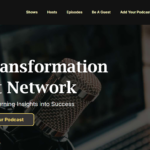Standing in a telecommunications retail store recently with the ‘service person’ speaking techno-gobbledy-gook, I was transported back decades to when I worked as a social work student at a children’s hospital. A friend had already started her placement at a nearby adult hospital and her stories about how students were treated by doctors filled me with dread. Imagine my relief when a neurosurgeon called me into his office and drew a diagram, patiently explaining the upcoming surgical procedure with a patient. The parents’ understanding of what was about to happen to their child and the reduction of the ‘fear factor’ was, he knew, significant in the child’s recovery. This was a formative lesson in ‘the customer experience’ – digital or no digital.
Some years later, I was sitting in similarly-hallowed company to that neurosurgeon; this time, among actuaries and investment managers. I used the word ‘proactive’ (which I thought was a pretty standard term ) and one of them said “What does that mean?” I realized that I was out of tune with my audience – that language can be a bridge or a barrier.
And here I was, January 2017, in this retail store where, before this day, I’d had an awesome experience with a genuine “customer experience representative”1 and had asked and confirmed that what my mother needed done with her iPhone could indeed be done at the store. On this day, we ended up with a different person (and experience.)
As he rattled off a lot of meaningless nonsense to my 90-year old mother, I felt my hackles rise. And it wasn’t about cost of service, either. I had made it quite clear I would happily pay whatever it cost to make her life easier, and she was moving her custom from another carrier to this one. He was not straight out of school – had he not learnt the importance of using plain English with customers? While I did sympathize (she looks every bit her 90 years and he must’ve thought “Why me?”), my mother is an iPhone (and iPad) addict, would run technology circles around most ‘silver surfers’ and is deserving of time and attention. Instead, she received a flood of jargon – a wall of isolationism. (Power trip?)
So, yes, I did………I explained this person’s job description to him. Sadly, the service my mother then received was exemplary. Why the unpleasantness to get the service we are willing to pay for? My mother now has a friend for life. (She is rather charming and did somewhat overcompensate for her rude daughter.)
Customers For Life
This got me thinking about the Digital Era: how quickly everything changes and what will never change – the human being in every transaction. Even the most technologically-advanced among customers will find their knowledge out of date pretty quickly. No one will know everything – the same applies to Jo(e) public as it does to users of technology in organizations, where the onus is on the service provider (IT department) to be helpful and not superior.
What is customer/user loyalty worth? The same mother told me last week she is taking her car to be cleaned at that Sasol service station: “You know the one where I heard the manager reminding staff that we want everyone to know THIS car was cleaned at a Sasol service station.” I can’t imagine how many people (she has a wide social circle) she has told that story. It won her heart, mind (and purse).
The PR War
Barrack Obama in a recent interview2 said his administration got so caught up with policy and action that they forgot to communicate with their constituency. They had ‘lost the PR war’, he said. The same can be said of technology companies (or IT departments) that sometimes think that as long as the technology works, the job is done.
But at the middle of every interaction is a human being who wants a service experience free from intimidation and confusion. Even internet purchases can be differentiated by how the purchaser ‘feels’ during the experience.
Bridge or Barrier?
Separation is immediately created with jargon and techno-babble. Language can either be a bridge or barrier. Someone once said ‘Communicate so an 8-year old can understand’. (We may have to adjust that age downwards today, but the principle holds.)
Whether you manage service delivery to the public or to internal departments (as an IT team), your connection with your customers (users, constituency) is crucial for your reputation – the perceived value you add to their lives or to the organization. The more effort they have to expend to use your service, the less they will like it, the more they will complain and the more demanding they will become.
Customer Experience Ideas
- Get your people to find out directly from their ‘constituency’ what their service experience has been
- Audit emails for user-friendliness
- Ensure that leaders remind people about their purpose – why they are there
- Make sure ‘Customer Experience’ (or words to that effect) features strongly in performance plans and reviews
- Find creative ways to get feedback from customers – there are so many great ideas3
Time invested getting the experience right could be your most important work. In the case of internal IT teams, this may even influence decisions when budgets are set.
Sources:
1 “The difference between Customer Experience and User Experience”, Blake Morgan, Jan 18, 2017. http://www.forbes.com/sites/blakemorgan/2017/01/18/the-difference-between-customer-experience-and-user-experience-2/#6c3175cf7035
2 Barack Obama – Eight years in the White House. Steve Kroft 60 Minute interview for CBS. 15 Jan 2017. http://www.cbsnews.com/news/60-minutes-barack-obama-eight-years-in-the-white-house/
3 “Customer Feedback: 19 Strategies To Get More Feedback”, . September 24, 2013http://blog.clientheartbeat.com/customer-feedback/
About The Author:
Tag/s:Customer ExperienceDigital Era





